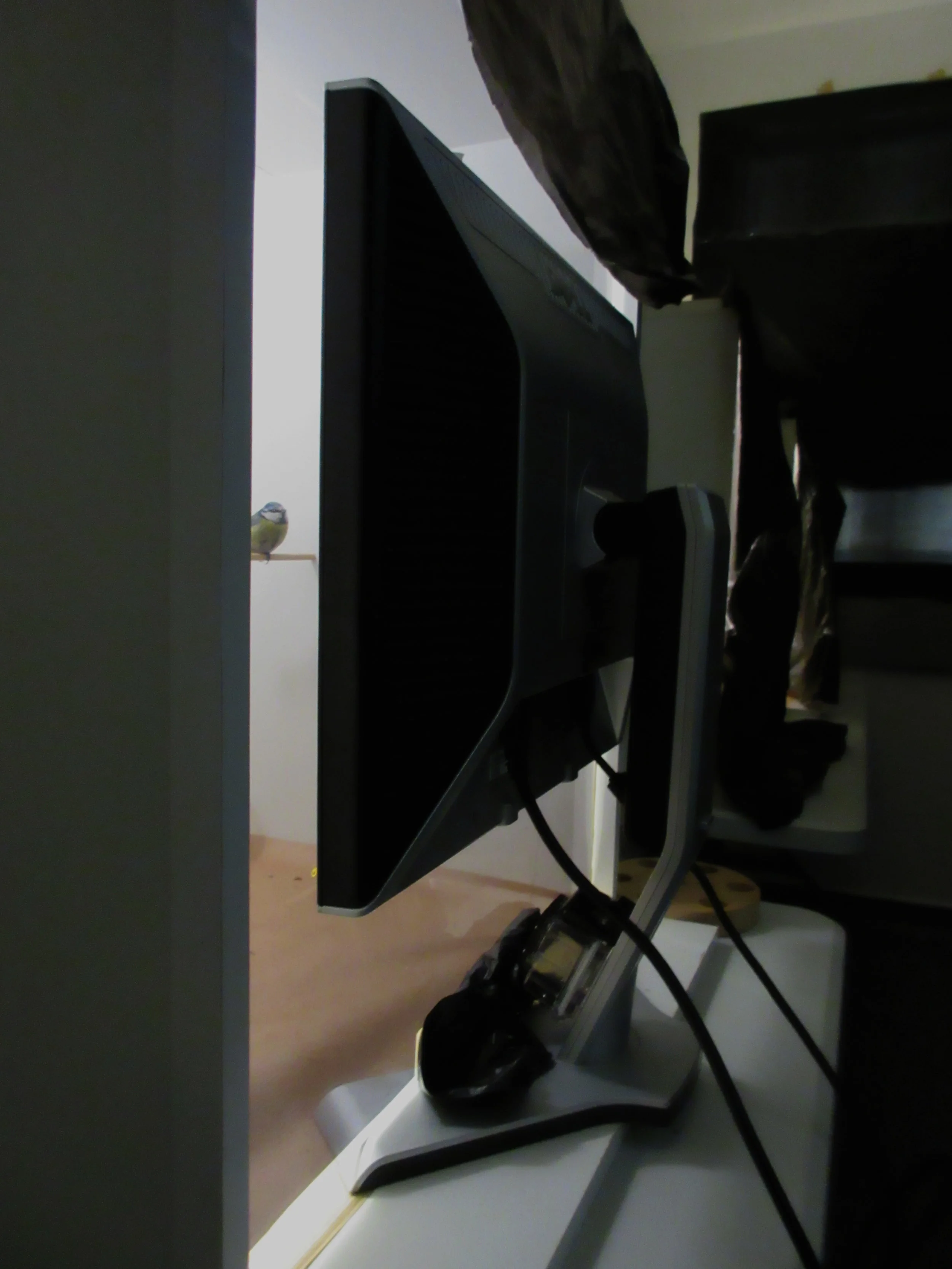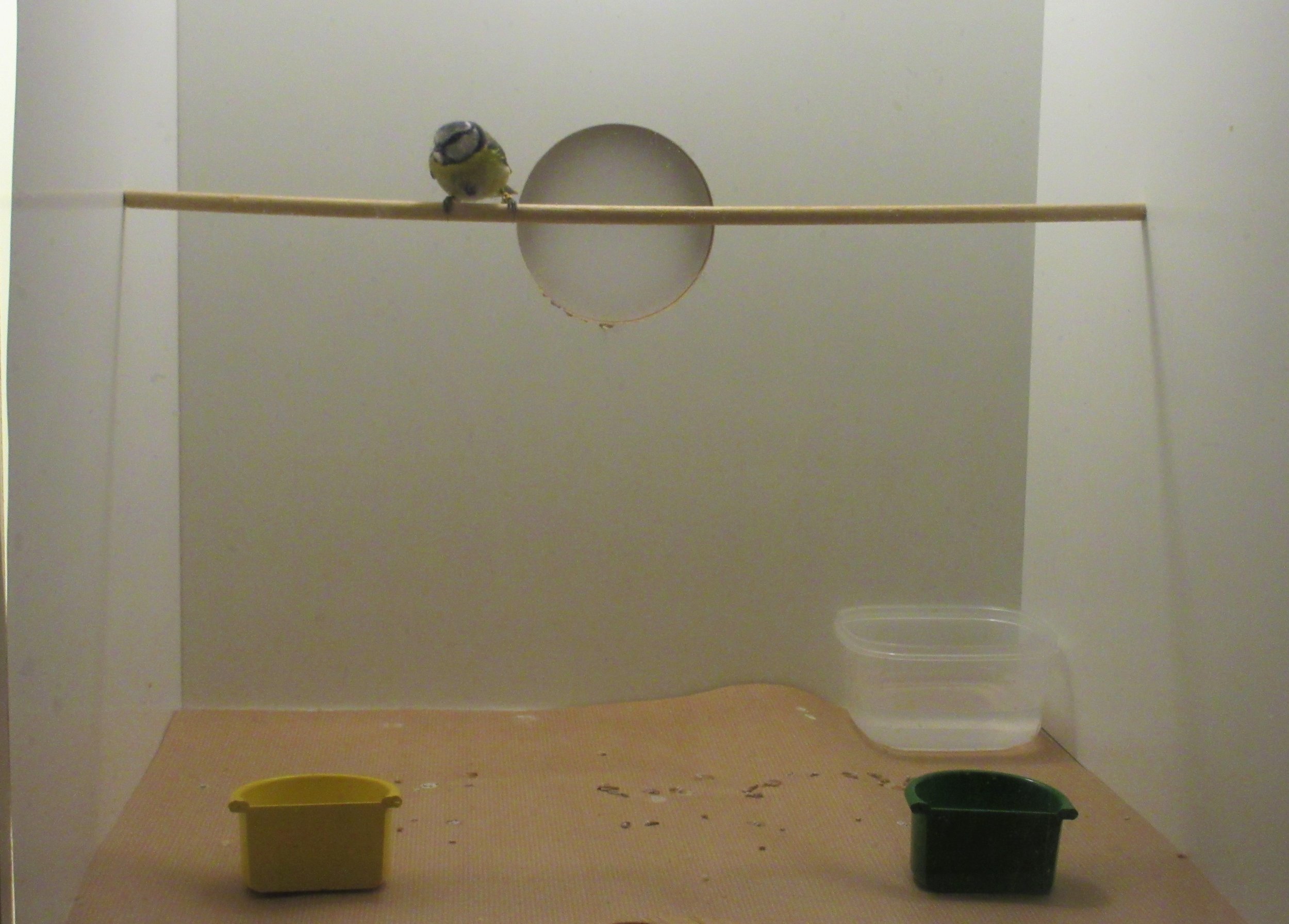Two papers in one week: how birds learn (and why it matters!)
Highlights! A quick summary of our two papers out this week on associative learning by hihi, and the coevolutionary consequences of social transmission among predators.
Week 51 turned out to be a big week for our group: two papers out to finish the year!
The first paper from Victoria Franks' PhD was accepted by Behavioural Processes: "Older and wiser? Age differences in foraging and learning by an endangered passerine." This was the culmination of hard work in the field and behind a computer, to understand what and how hihi juveniles learn. The study forms an important part of Vix's thesis because it reminds us that adults and juveniles do not necessarily learn about food in the same way - and it dispels any rumours that hihi can't learn!
A male hihi learns to associate the while circle with a food reward. From Franks & Thorogood Behavioural Processes 2017.
Secondly, we had a big paper come out from our work on the co-evolutionary consequences of social interactions among predators in Nature Ecology & Evolution: "Social transmission of avoidance among predators facilitates the spread of novel prey". This was the experiment that started our core research project, but it needed some nice modelling by Hanna Kokko to finish it off. There's more in a "Behind the Paper" blog post on Nature Ecology & Evolution Community, and Science News produced a fantastic video about it:
Finally, Liisa Hamalainen and her assistant Marianne Teichmann have now finished a gruelling set of experiments in Konnevesi continuing this research project. The take home message: Blue tits never do what you expect them to!
Can video playback provide social information for foraging blue tits? Yes, but do they use it?
Liisa's first PhD paper is out! Read her blog post to help us solve why the results are still puzzling.
Two weeks ago marked a big moment for the Informed Birds research group - my first PhD paper (and Rose’s first paper as a PhD supervisor!) was published:
‘Can video playback provide social information for foraging blue tits?’
L. Hämäläinen, H.M. Rowland, J. Mappes, R. Thorogood. PeerJ 5, e3062 (2017).
I conducted this experiment last winter at the Sub-Department of Animal Behaviour in Cambridge using 25 blue tits from Madingley Woods (all birds were returned to the woods after 4 days). My aim was to investigate how blue tits use social information about food palatability, and I studied this using video playback of a foraging demonstrator.
A blue tit (Cyanistes caeruleus) watching video playback (L. Hämäläinen)
Video playback should be a good tool for studying information use – all birds can receive a “standard” amount of information – but video playback had not been used with blue tits before. Therefore, we first tested if blue tits would pay attention to birds on a screen.
We found that blue tits clearly paid attention to the demonstrator bird: they hopped on their perch more when a bird was on the screen versus when there was only a feeding cup. We also found that birds behaved differently, depending on what the demonstrator was eating – observers paid more attention if the demonstrator ate a bitter-tasting mealworm! We don’t know if this was because the demonstrator was more active when eating a bitter prey item (like many birds, blue tits wipe their beaks and shake their heads vigorously), or because this aversive response provided more “useful” information for observers.
Hm, which cup? Social information about cup colour and potential food items did not lead to copying, but birds did make decisions faster. (L. Hämäläinen)
The second part of my experiment tested if a demonstrator’s behaviour affected the observer’s food choices. The idea was that blue tits that observe another find and eat a bitter worm should avoid foraging from the same coloured cup – in other words, observers should associate cupc colour with the risk of finding unpalatable prey. On the other hand, watching a demonstrator find a palatable worm should result in observers foraging from the same coloured cup.
Contrary to our prediction, we found that the observers did not seem to use social information in their foraging decisions. Instead, from a choice of two cups 50% of birds chose the same cup as the demonstrator (regardless of its contents). This suggested that the blue tits’ foraging choices were completely random, but we decided to look at the results more closely to try and understand why.
In fact, watching a demonstrator did affect their foraging! Birds that matched our predictions (i.e. avoided the cup after a demonstrator found an unpalatable worm, or chose the same cup after witnessing a demonstrator find a palatable worm) made their cup-choice much more quickly than individuals who did not. This suggests that birds that appeared to choose at random may actually have been influenced by social information – but we’re not (yet) able to explain how this happened. Any ideas?
In summary, our results suggest that video playback can provide social cues to blue tits and it therefore provides a promising method for studying social learning in parid tits. However, we still do not know how these cues are later used in decision-making and this will be the challenge for the next chapters of my PhD!
Liisa Hämäläinen begins her 1st field season
Liisa is now spending her time out in Madingley Woods, collecting data to compile a social network for the blue and great tits. Her first experiments will combine captive experiments with specific birds that she'll be removing (temporarily!) from the woods. It will be a busy few months, good luck Liisa!




